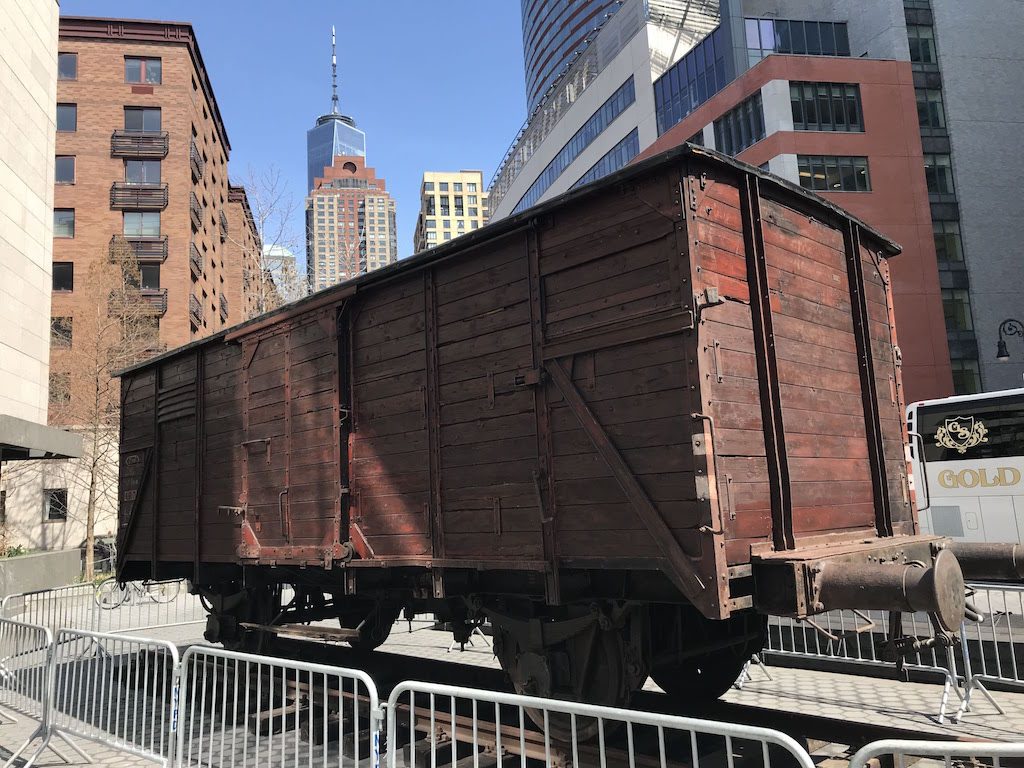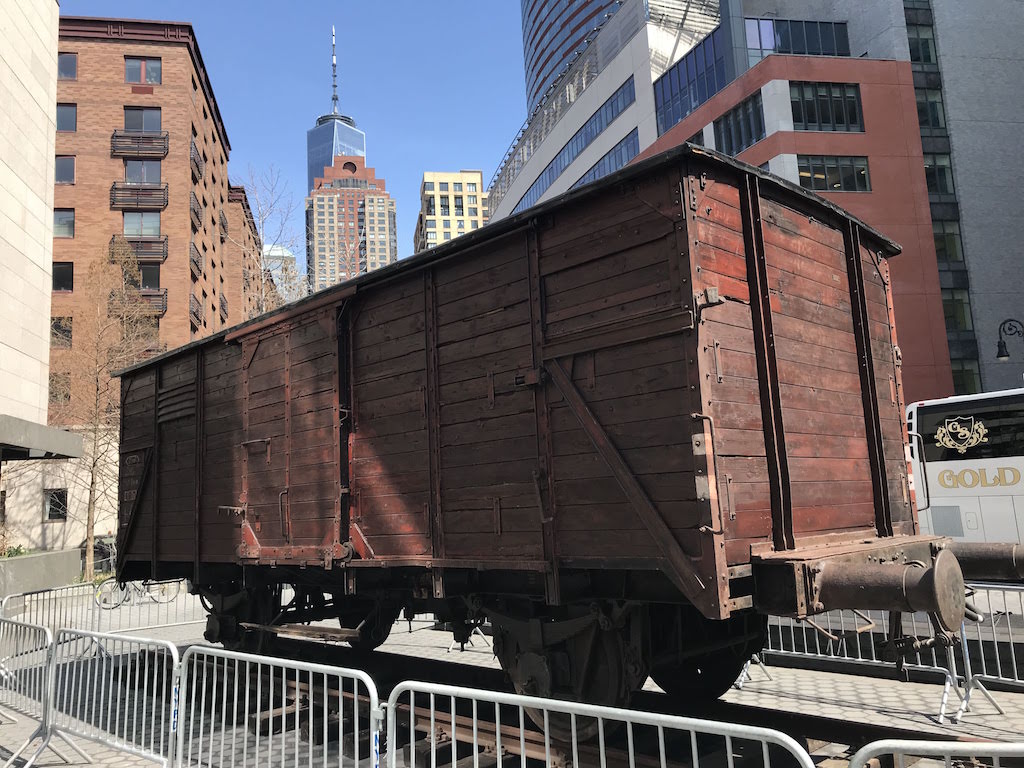BY GABE HERMAN | A German World War II-era freight car was installed on March 31 just outside the Museum of Jewish Heritage in Battery Park, ahead of the museum’s upcoming exhibition on Auschwitz.
The train car is one of 120,000 that were built between 1910 and 1927 and used by the Deutsche Reichsbahn, or German National Railway. They were used to transport goods, livestock and foodstuffs.
During the Second World War, Nazis used the freight cars to deport people in occupied Europe to concentration camps.

The train car is part of the traveling exhibition “Auschwitz. Not long ago. Not far away.” It will run from May 8 until Jan. 3, 2020.
The exhibition at the Museum of Jewish Heritage, at 36 Battery Place, is being produced in partnership with the Auschwitz-Birkenau State Museum in Poland and the international exhibition firm Musealia.
“The freight car is symbolic of the murder of millions of people,” said Bruce C. Ratner, chairperson of the Museum’s board of trustees. “Auschwitz is not ancient history but living memory, warning us to be vigilant, haunting us with the admonition ‘Never Again.’ It compels us to look around the world and mark the ongoing atrocities against vulnerable people, and to take a firm stand against hate, bigotry, ethnic violence, religious intolerance and nationalist brutality of all kinds.”
The freight car was delivered to the installation site on a flatbed truck. A crane then raised it onto rails that were laid at the site.
An Auschwitz survivor, Ray Kaner, was at the March 31 installation.
“This car that transported so many people — their destination was to die,” she said. “I’m glad to let people know what happened when there is hate, prejudice and anti-Semitism because we were designated to die only because of our religion. I feel that it is so important that people should know what we went through for no reason other than we were Jews. I speak now as much as I can, so children know what happened to us when we were children.”
The car is 11.5 feet wide and 31.5 feet long, with about 215 square feet of space. Train cars like it were used in World War II to transport soldiers and prisoners of war. And they were used to deport Jews, Romani and others to ghettos and concentration camps.
At the Auschwitz concentration camp in Poland, more than 1.1 million people, including about 1 million Jews, were murdered. Most of them were taken there in train cars like the one installed in front of the museum.
“An original wagon will allow all passersby to reflect on how the memory of Auschwitz is part of our modern world,” said Luis Ferreiro, director of Musealia and the exhibition project. “Understanding how that place came to be, and what this means for our view of ourselves, is one of the core purposes of this project.”
The Auschwitz exhibit will include more than 700 original objects, including personal items of survivors and victims, and artifacts from the concentration camp. It will also have 400 photographs. More information can be found at mjhnyc.org/exhibitions/auschwitz.


















